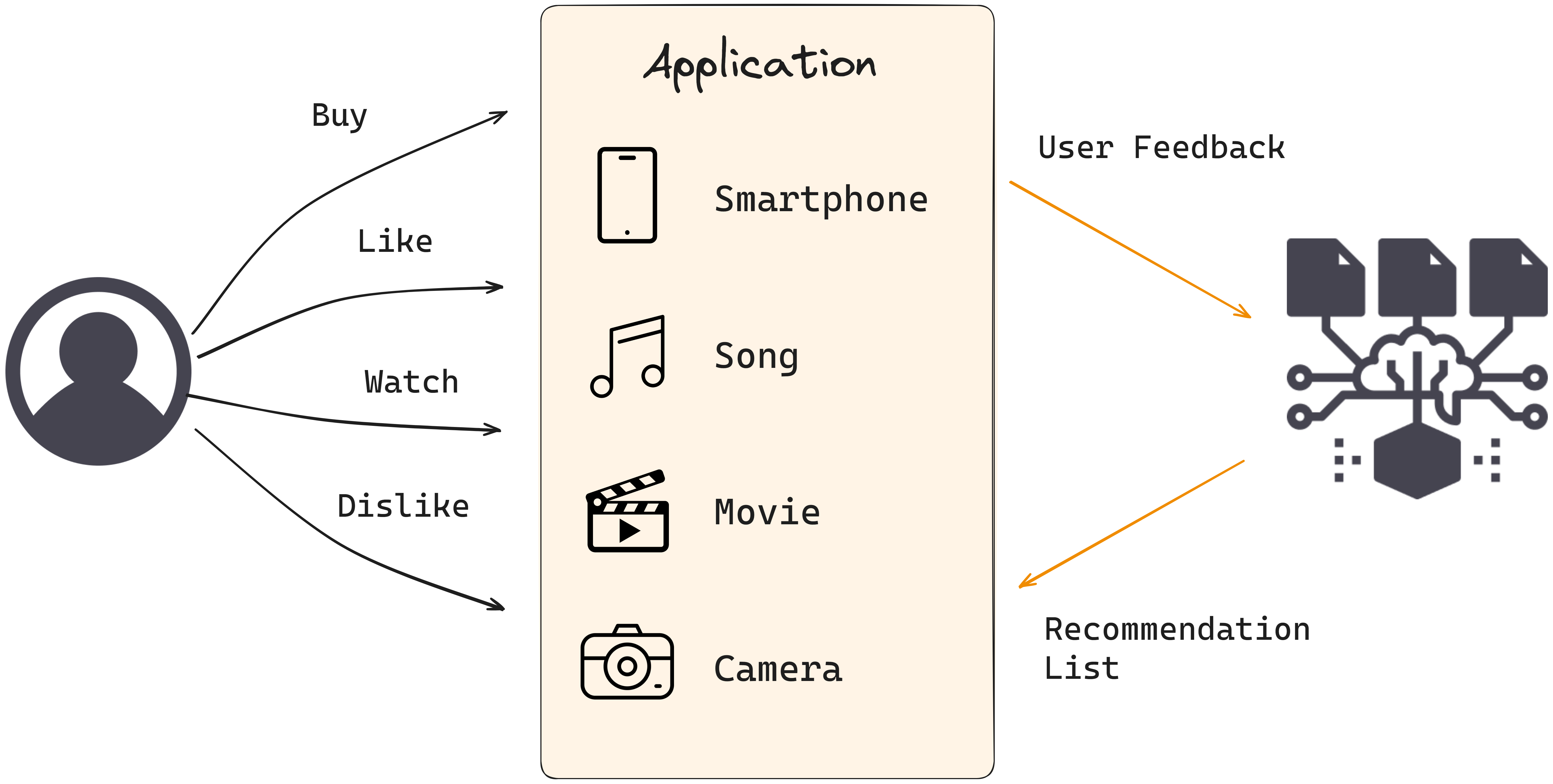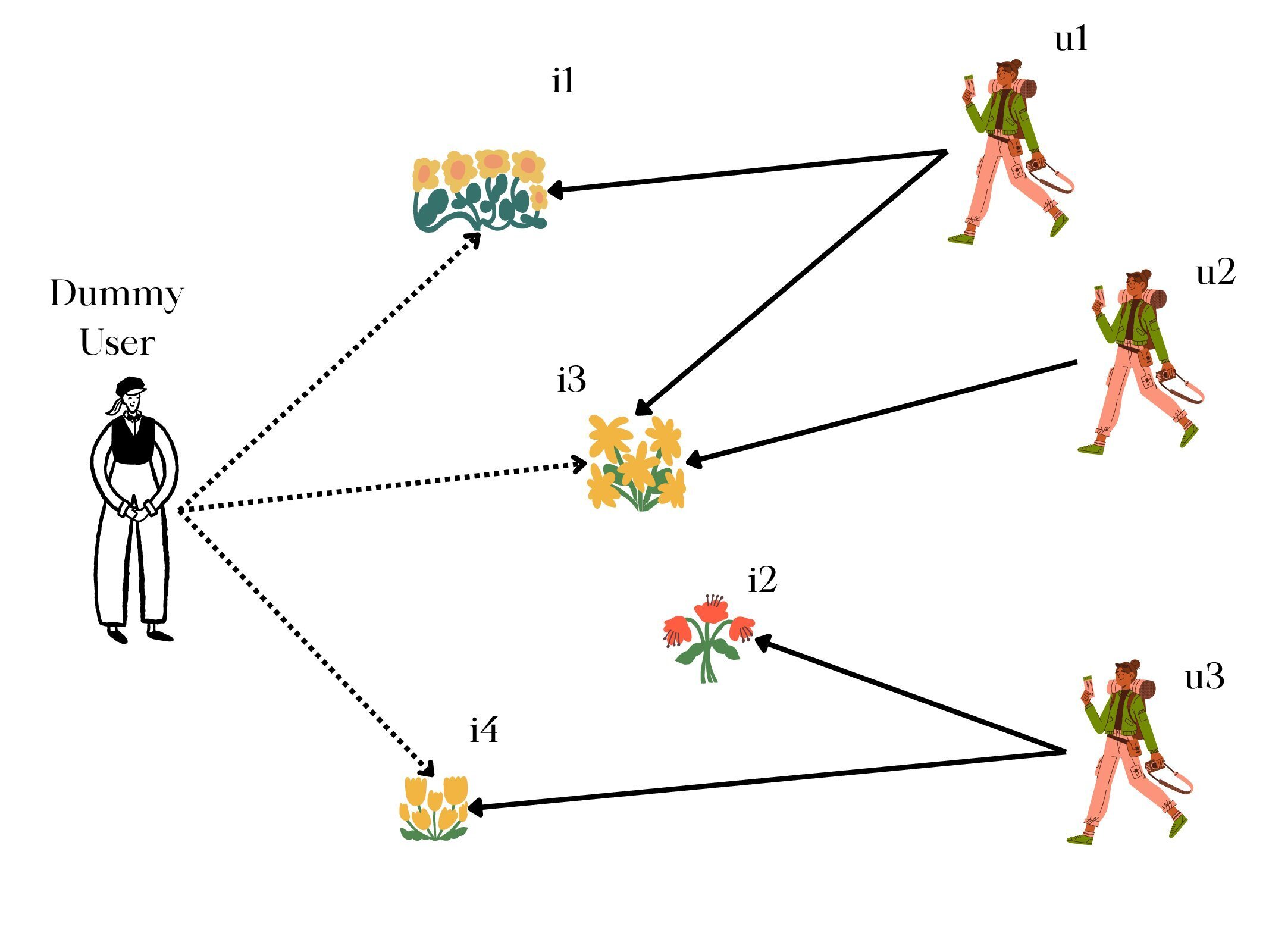
Personalized product recommendations, according to a study by IBM, can lead to a 10-30% increase in revenue. But creating truly personalized experiences requires extensive user and product data, which is not always available. For example, providers with restrictions on collecting user data may only have basic product information, like genre and popularity. While collaborative filtering approaches work reasonably well when extensive user and product data is scarce, they leave significant gains on the table. Incorporating side data with a recommender based on collaborative filtering can significantly increase recommendation quality (>20% gains in precision), leading to greater customer satisfaction, more traffic, and millions in additional revenue.
Recommender Systems are increasingly important, given the plethora of products offered to users/customers. Beginning approximately twenty years ago, fashion retailers developed basic versions of content-based recommenders that increased user engagement (compared with a no-recommendations approach). But when the capabilities of event-tracking systems improved, it became possible to integrate new signals that could help provide even better recommendations.
At the moment of this writing, fashion retailers have adopted more sophisticated recommendation systems that ingest not only users' purchasing/viewing history but also user metadata (age, location, spending habits, mood, etc.) and item metadata (category, popularity, etc.).
But not everyone has access to the kind or amount of metadata fashion retailers do. Sometimes only scarce side data is available. Public service providers with their own on-demand audio and video platform, for example, are legally restricted in collecting user metadata. Typically, they use collaborative filtering (CF) approaches, which employ historical interactions (data consisting of user-item pairs) to extrapolate user preferences via similarities of all users' browsing/purchasing history. Such companies still have item data - genre, popularity, and so on - that can be used to improve the quality of recommendations.
Developers often disregard this side information because it is scarce. While CF (i.e., extrapolating user preferences via similarities of all users' browsing/purchasing history) works reasonably well in this use case, we can improve the recommendation quality (thereby increasing user engagement) of CF by adding available side information, even if it's scarce.
More precisely, there are libraries that allow us to "inject" side information (LightFM, for example). Even the most efficient and effective collaborative filtering models, such as ALS Matrix Factorization (MF) (the Python "implicit" library) or EASE (Embarrassingly Shallow Autoencoder), can be extended and improved using side information.
Matrix factorization is a common collaborative filtering approach. After a low-rank matrix approximation, we have two sets of vectors, one representing the users and the other representing the items. The inner product of a user and item vector estimates the rating a particular user gave to a particular item.
We can represent this process using a graph, in which users and items are graph nodes, and predicted ratings are edge weights between them. The graph is bipartite: links appear only between nodes belonging to different groups. The list of recommendations made to a user correspond to the most likely new item-connections for this user-node. We can easily represent side info injection as graph nodes - for example, a "genre" node – that link related items. When understood from a graph perspective, it is easy to see how matrix factorization can be extended to include additional metadata. What we want is to somehow let the algorithm know about the new links, which help group similar items or users together. In other words, we want to "inject" new nodes – nodes that link nodes belonging to the same group. How do we do this? Let's take a look at the illustration below:

There are three users: u1, u2 and u3; and four items: i1, i2, i3, i4. The user u1 has interacted with items i1 and i3. There is a dummy user, who links items that have the same color (i1, i3, i4). By coupling similar items, the dummy user helps the model identify related content. This increases the chances of item i4 being recommended to user u1.
Adaptation
To enrich a CF approach, we need only add dummy data: when only item side information is available, add dummy users; when only user side information is available, add dummy items; when both user and item information are available, add both dummy users and dummy items. Obviously, the dummy nodes should not be included in the recommendations; these nodes are only there to help "inject" some "commonality" of the nodes belonging to a certain group. The same approach (as used above with MF) can be used with, for example, EASE, or with an explicitly graph-based approach for recommendations such as PageRank. In fact, with PageRank, the walks would include the dummy nodes. A question remains: how should dummy user interactions be weighted (rated)? We suggest you first start with low weights, see how recommendation quality changes, and iteratively adjust your weights to fine-tune.
Minimal Code for Adding Dummy Users
Here is some minimal Python code demonstrating the addition of dummy users, one for each category:
import implicit import numpy as np import scipy.sparse as sp # Create a synthetic user-item interaction matrix user_item = sp.coo_matrix((np.random.randint(0, 2, 100), (np.random.randint(0, 10, 100), np.random.randint(0, 10, 100)))) # Create synthetic item categories item_categories = ['A', 'B', 'A', 'C', 'B', 'C', 'A', 'B', 'C', 'A'] # Create dummy users for each unique category unique_categories = list(set(item_categories)) dummy_users = {category: i + user_item.shape[0] for i, category in enumerate(unique_categories)} # Extend the user-item matrix with dummy interactions extended_user_item = sp.vstack([ user_item, sp.coo_matrix((len(unique_categories), user_item.shape[1])) ]).tocsr() # Ensure the matrix is in CSR format # Add dummy interactions # For each item, add an interaction with its corresponding dummy user rows, cols, data = [], [], [] for item_idx, category in enumerate(item_categories): rows.append(dummy_users[category]) cols.append(item_idx) data.append(1) # or another value indicating the strength of the dummy interaction # Add dummy interactions to the extended_user_item matrix dummy_interactions = sp.coo_matrix((data, (rows, cols)), shape=extended_user_item.shape) print(rows, cols, data) extended_user_item += dummy_interactions print(extended_user_item) # Fit the ALS model model = implicit.als.AlternatingLeastSquares(factors=50) model.fit(extended_user_item.T) # Transpose to item-user format as implicit library expects item-user matrix # Generate recommendations # Note: Ensure not to recommend dummy users user_id = 0 # Example user ID recommended_items = model.recommend(user_id, extended_user_item[user_id], N=5, filter_already_liked_items=True) recommended_items
We evaluated an ALS matrix factorization model with genre dummy users on an audio-on-demand platform with over 250k items (genres such as "comedy," "documentary," etc.). Compared to their production system, adding dummy nodes increased recommendation accuracy by over 10%. Obviously, the addition of dummy nodes increases computational and memory complexity, but in most cases this is a negligible compromise, given the scarcity of side information. Though the platform we evaluated had over 250K items in the catalog, there were only a few hundred item categories.
A natural question: what to do when the side information is numerical, not categorical? With numerical side information, we advise pursuing one of the following two approaches:
Injecting dummy nodes provides a lightweight way to improve recommendations when only limited side data is available. The simplicity of this approach (e.g., LightFM), compared to neural models, lies in keeping training fast and preserving interpretability. Dummy nodes are ideal for sparse categorical features like genre, but may underperform for dense numerical data. With rich side information, neural collaborative filtering is preferred, despite increased complexity.
Overall, dummy nodes offer a transparent way to gain value from side data, with little cost when features are simple. They balance accuracy and speed for common cases. We recommend using this technique when you have sparse categorical metadata and want straightforward gains without major modeling changes.
Stay updated with VectorHub
Continue Reading